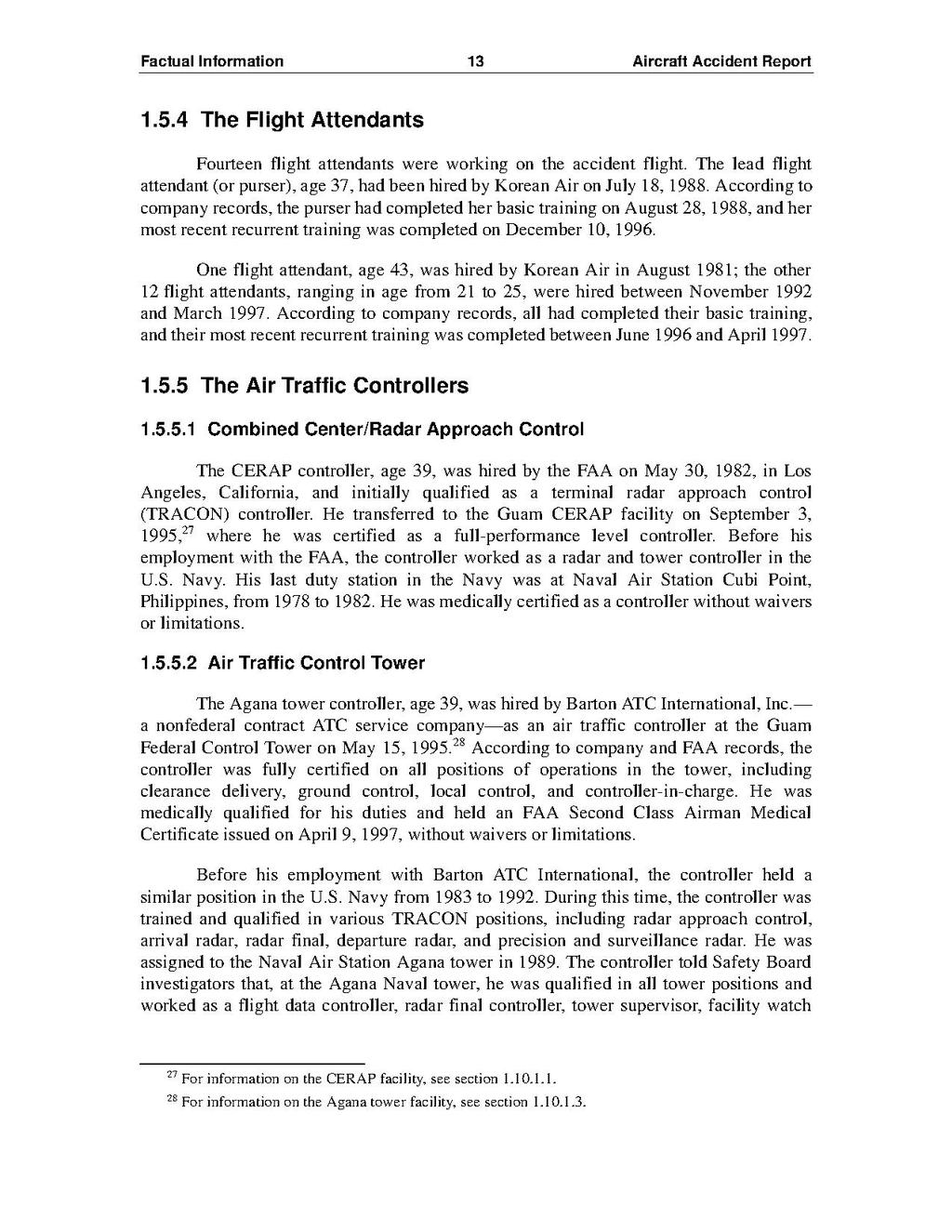1.5.4 The Flight Attendants
Fourteen flight attendants were working on the accident flight. The lead flight attendant (or purser), age 37, had been hired by Korean Air on July 18, 1988. According to company records, the purser had completed her basic training on August 28, 1988, and her most recent recurrent training was completed on December 10, 1996.
One flight attendant, age 43, was hired by Korean Air in August 1981; the other 12 flight attendants, ranging in age from 21 to 25, were hired between November 1992 and March 1997. According to company records, all had completed their basic training, and their most recent recurrent training was completed between June 1996 and April 1997.
1.5.5 The Air Traffic Controllers
1.5.5.1 Combined Center/Radar Approach Control
The CERAP controller, age 39, was hired by the FAA on May 30, 1982, in Los Angeles, California, and initially qualified as a terminal radar approach control (TRACON) controller. He transferred to the Guam CERAP facility on September 3, 1995,[1] where he was certified as a full-performance level controller. Before his employment with the FAA, the controller worked as a radar and tower controller in the U.S. Navy. His last duty station in the Navy was at Naval Air Station Cubi Point, Philippines, from 1978 to 1982. He was medically certified as a controller without waivers or limitations.
1.5.5.2 Air Traffic Control Tower The Agana tower controller, age 39, was hired by Barton ATC International, Inc.-- a nonfederal contract ATC service company--as an air traffic controller at the Guam Federal Control Tower on May 15, 1995.[2]
According to company and FAA records, the controller was fully certified on all positions of operations in the tower, including clearance delivery, ground control, local control, and controller-in-charge. He was medically qualified for his duties and held an FAA Second Class Airman Medical Certificate issued on April 9, 1997, without waivers or limitations. Before his employment with Barton ATC International, the controller held a similar position in the U.S. Navy from 1983 to 1992. During this time, the controller was trained and qualified in various TRACON positions, including radar approach control, arrival radar, radar final, departure radar, and precision and surveillance radar. He was assigned to the Naval Air Station Agana tower in 1989. The controller told Safety Board investigators that, at the Agana Naval tower, he was qualified in all tower positions and worked as a flight data controller, radar final controller, tower supervisor, facility watch
